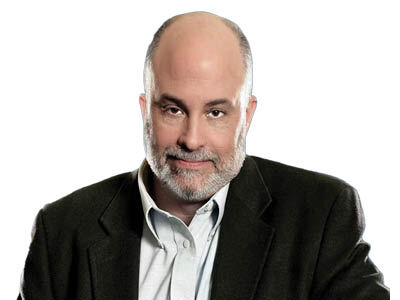Maui Asks Feds To Flex Rules Governing $1.6 Billion Wildfire Recovery Grant
News > Business News

Audio By Carbonatix
8:00 PM on Sunday, April 27
By Brittany Lyte, Honolulu Civil Beat
Honolulu, HI (Honolulu Civil Beat)
The county wants to use some of the money to rebuild accessory dwelling units but is primarily focused on securing final approval.
Maui County is asking for greater flexibility in how it's allowed to spend $1.6 billion in federal recovery money meant to help residents rebound from the 2023 wildfires while making tweaks to ensure the action plan it submitted last week to regulators wins approval.
The cost to rebuild thousands of destroyed homes, roads and infrastructure could top $7 billion, the county's Office of Recovery estimates. The grant from the U.S. Department of Housing and Urban Development makes a significant dent but it doesn't relieve local government officials of the scramble to find other revenue sources.
Federal regulators have 45 days to approve the county's action plan. The county anticipates it could be ready to start accepting applications from eligible residents and businesses for programs detailed in the plan as soon as this summer.
There are strict rules governing how the money can be spent. At a recent community meeting, John Smith, who heads Maui's Office of Recovery, said his office is trying to convince HUD to approve spending the money on a series of currently ineligible expenditures, such as building accessory dwelling units.
These units, common throughout Hawai"i, provide additional housing on a homeowner's property for use by extended family or as standalone rentals.
Residents also said they want some of the funds spent on undergrounding electrical lines. Smith said the county is exploring ways to help businesses put powerlines underground in the commercial district but noted that HUD won't allow the grant money to be spent on a private utility company's project.
"We're pushing HUD really hard to be as flexible as they can with this fund," Smith said last week at a public meeting.
Safer And Better?
More than half of the HUD award -- $903 million -- is still allocated to rebuilding houses in the final action place the county submitted Tuesday. That money is intended to help fill the gap between the price of reconstruction and what homeowner insurance policies will cover. The average cost of replacing the 5,527 homes, including the many rental units, destroyed by the 2023 wildfires is $1 million, according county estimates.
A quarter of the grant is allocated for infrastructure projects. The plan also sets aside $214 million -- 13% of the total grant -- to mitigate against future disasters. Another $170 million is split between public services and administration costs.
Some residents fear reconstruction is already happening without measures to build back better and safer.
In Lahaina's Kahua Camp, a small number of new homes are popping up. With its narrow streets and aging, densely packed homes, the neighborhood was the site of the largest number of 2023 wildfire casualties.
Some of the new houses under construction in the neighborhood have even larger footprints than the homes they replace, according to U"i Kahue-Cabanting, a Lahaina small business owner whose rental home burned down in the Kahua Camp neighborhood. She said she worries that the roads and sewer lines going back in today are no better than they were before the fire.
"What happened to building wider streets?" Kahue-Cabanting said. "The streets they rebuilt are just as narrow, but the houses are coming back even bigger. We're all so wrapped up in our own recovery that people aren't seeing the bigger picture and saying, "Wait a minute, what is this $1.6 billion going for if it's not to rebuild in a way that's safer and better?"
Smith was unavailable to comment Friday, said county spokesperson Lois Leinani Whitney.
Community feedback helped inform the county's HUD grant spending plan in a number of ways: Housing reconstruction programs will prioritize using fire-proof materials; native plants and firebreaks will become part of the overall fire mitigation strategy; and more funds have been set aside to ensure that the Lahaina of the future has adequate off-street parking.
The updated plan now dedicates $15 million for economic revitalization, including workforce training opportunities -- something residents had championed. Money from the plan will also support the delivery of medical and mental health care and homeless services to area residents.
Overall, the updated plan isn't much different from the draft version unveiled to the public in March, according to Smith.
"In reality, basically the same programs are funded," he said. "We just moved money from one program to another to meet the requirements of HUD. They came out with some really specific comments on the draft plan already because we worked with them on it and they said, "This would fit better here." We want to make sure the plan that we submit to HUD is approved."
Civil Beat's coverage of Maui County is supported in part by a grant from the Nuestro Futuro Foundation.
This story is provided as a service of the Institute for Nonprofit News’ On the Ground news wire. The Institute for Nonprofit News (INN) is a network of more than 475 independent, nonprofit newsrooms serving communities throughout the US, Canada, and globally. On the Ground is a service of INN, which aggregates the best of its members’ elections and political content, and provides it free for republication. Read more about INN here: https://inn.org/.
Please coordinate with [email protected] should you want to publish photos for this piece. This content cannot be modified, apart from rewriting the headline. To view the original version, visit: https://www.civilbeat.org/2025/04/maui-asks-feds-to-flex-rules-governing-1-6-billion-wildfire-recovery-grant/






